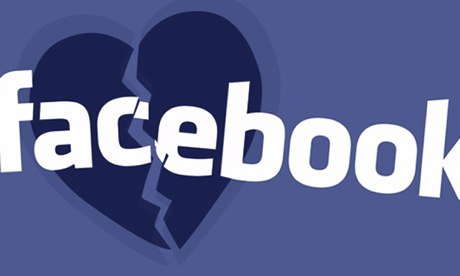
Even if you have broken up face-to-face, you might have a dilemma: who ends the relationship on Facebook – is it the dumper or the person who is dumped? I asked this in class one day. "Oh, I know the answer to this one," said a tall beauty at Indiana University. "Everyone in my sorority knows the answer to this one. It is the person who is dumped who gets to change the status on Facebook." But then she paused. "But not everyone on campus knows this."
In that pause, I realised that in the digital age people get their hearts broken twice. First, they are being dumped. Then they lose control over how their friends and family find out, a control they believed they should have.
I am fascinated by what happens when people use technology designed to connect people and use it instead to disconnect. To get at this, I interviewed 72 Americans, mainly college students, about how they used new media to disentangle a relationship. In each interview, someone would tell me about a practice I had never heard of.
One woman told me she knew she was going to break up at some point. Why? They had such awful text message fights. But she didn't know when the breakup would happen. So she started saving the worst of his texts from each fight. Her mobile phone would tell her "You have seven saved messages". This meant that he had said something horrible perhaps seven times in the last five fights. When the phone told her there were 10, that was when she would know she had to talk about the breakup. No one else I interviewed thought of using their phone's storage notifications to signal it was time to break up.
Why did people insist there was a standard etiquette for using Facebook, voicemail and texting, despite the fact that they constantly interacted with people who didn't adopt their rules? After all, if the sorority women understood that all bets were off about how their breakup would become Facebook official, they might not be as upset.
We are surrounded by media with different histories of standardisation attached. The telephone has a different history from email. For example, when the telephone was introduced, Edison's company wanted everyone to answer by saying "hello". But Graham Bell's company wanted people to use "ahoy". "Hello" won the day, although "ahoy" still lingers.
In the early 20th century, as new media were introduced, companies, schools and government offices worked hard to standardise how consumers use them. Telephone companies sent out warning letters to customers they thought were too talkative. Television advertisements modelled how their idea of a typical American family should watch TV.
Today, companies don't put the same emphasis on everyone using the technologies in the same ways; in fact, it's the opposite. Companies often encourage users to adopt technologies in their own distinctive ways so that each one feels deeply invested in that website or communicative technology. Manuals are slimmer and slimmer. The design of the object is supposed to guide the user without any extra intervention.
Companies still police activity, but it happens mainly after the fact. When a company such as Facebook decides a user has posted something inappropriate, they often remove first and explain later only when that user protests.
Yet even the most thoughtful design cannot predict the social dilemmas people will encounter. That helps to explain why people don't quite know how to use communicative technologies for all the messy tasks that being a social person involves.
There is no manual for how to disconnect from other people on Facebook. People work out what to do by guessing or by talking to their friends and family. But not everyone's friends and families come up with the same solutions for these commonplace dilemmas. And people often date someone outside their existing circle of friends, which only makes things harder.
The result? Often break-ups involve two people who think they are acting in the ways you are supposed to when using these technologies. But they follow etiquettes that are different enough to mean they end up offending each other.
All of us are surrounded by technologies where what is proper can be up for grabs. We know it is possible to have agreed etiquette around technologies; it works for some of the media we use regularly – phones and letters. But it doesn't work for all technologies – largely because companies these days focus so much on what design can accomplish.
Companies have made it incredibly easy to connect all over the world, but breaking up is still hard to do.
Ilana Gershon is an associate professor at Indiana University, 2013-2014 fellow at Stanford's Center for Advanced Study in the Behavioral Sciences and author of The Breakup 2.0.

